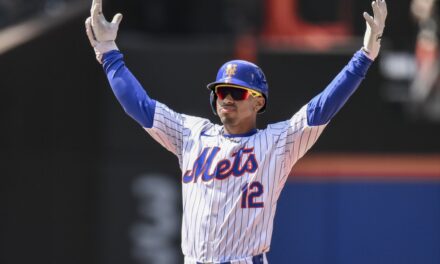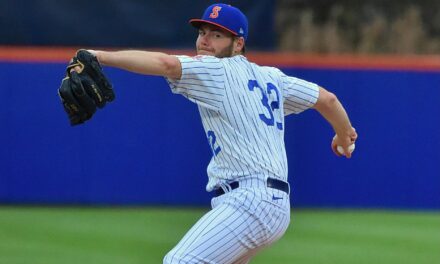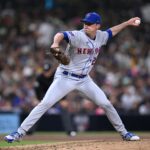Our age is retrospective. It builds the sepulchres of the fathers. It writes biographies, histories, and criticism. The foregoing generations beheld God and nature face to face; we, through their eyes. Why should not we also enjoy an original relation to the universe? Why should not we have a poetry and philosophy of insight and not of tradition, and a religion by revelation to us, and not the history of theirs? Embosomed for a season in nature, whose floods of life stream around and through us, and invite us by the powers they supply, to action proportioned to nature, why should we grope among the dry bones of the past, or put the living generation into masquerade out of its faded wardrobe? The sun shines to-day also. There is more wool and flax in the fields. There are new lands, new men, new thoughts. Let us demand our own works and laws and worship.
-Ralph Waldo Emerson, “Nature” 1836
Ralph Waldo Emerson was one of the leading figures in the Transcendentalism movement of literature and philosophy. Transcendentalism was a smaller part of a larger cultural era in American history known as the Second Great Awakening, a religious revival that defied economic and social structures. Advocates for the common man sprung up throughout the countryside, pleading the case of the poor yeoman farmer or the landless laborer. Andrew Jackson, among other political leaders, took this to heart, bringing then-revolutionary ideas, such as universal white male suffrage to the frontburner in what would later be thought of as the golden age of American politics and society.
What made this era so great was one key characteristic: it challenged the status quo. While there was still, of course, was economic stratification, previously held economic and political beliefs were turned upside down in a way that changed American history forever.
The idea of challenging the established order is not a new idea. Even before these heralded figures, the United States was a country of firsts, one that went against the grain in almost every respect. That attitude spread to much of the rest of the world, and today is prevalent in every scientific, mathematical, and philosophical field you can think of.
Times have certainly changed since the 1830s, and the demand is now for empirical evidence. This evidence has revolutionized biology, medicine, technology, you name it. Hard proof, not just logic or rhetoric, needs to be there to prove something to be true.
This has more recently been applied to Major League Baseball front offices where, like it or not, people were forced to look at new, statistical-based ideas about how the game is played.
Every single MLB front office has some form of an advanced statistical analysis department at the moment, yet there is still a large segment of fans and those who cover the game who are holding out, refusing to even acknowledge that this new set of beliefs are relevant. Many say teams still don’t use them, when in fact, the Cardinals and Red Soc have each attributed their recent success to an ideal combination of scouting and advanced statistics. It’s here to stay.
This last but still significant segment of baseball followers is not going to affect the way executives run their organizations anymore, but they, especially the writers who still have major influence, still need to be convinced. It’s always difficult to cast aside long-held beliefs and to find new perspective, especially after decades of being convinced something is superior.
The biggest barriers for many are the thoughts of current and former players on sabermetrics. They played the game for sometimes as much as 20 years. Shouldn’t they know more than anyone else? One would think that an experienced professional would know the trade inside and out, but baseball is a unique case in which there are two distinct jobs: evaluating talent and playing. The former players know how to play the game, but not necessarily evaluate it. They may know what worked for them or what worked for others they knew, but that doesn’t mean their way is the best way. That is where the people who have done hardcore research and analysis come in.
We have seen a huge influx of Wall Street GMs, and for good reason. While they are not former players, they both love baseball and can apply their statistical expertise to it. They are able to cast aside their predispositions far easier than players can.
Bill James is credited as the creator of the sabermetric movement in baseball.
This is a touchy subject, but education is an important factor as well. So many professional baseball players never went to college, and many more from foreign countries left home at 16, never even completing high school. In contrast, the analyst-types who didn’t play often have undergraduate or graduate degrees in mathematical fields, which will help them look at that data objectively. Bill James, the grandfather of sabermetrics, has a phD in statistics. Who would you rather hire to build a team, someone who both never got a college education and relies heavily on their personal experience or a highly-educated person who is able to take an objective look at things? The answer should be obvious.
Now, that’s not to say former players don’t have a place in the game, because they absolutely do. They often make great coaches and can relate to players like no other non-baseball person could. If a former player is able to combine their knowledge of the grind of a baseball season as well as knowledge of mechanics with objectivity and data interpretation, that’s even better, but it’s also uncommon. When it comes down to running a ballclub, the best person for the job is often someone who never played baseball professionally, as that combination in a player is so hard to come by.
The revolutionary figures in history are those who stood up to challenge traditions. New may not always mean better, but doing research and thoroughly examining an idea is always beneficial. Baseball is one of the few areas where new ideas are frowned upon by fans. The common “baseball card stats” were created in the 19th century, long before computers could crunch data in seconds, even before the rules of baseball were even set in stone.
I am not demanding those holdouts to “convert,” only to acknowledge that there is some validity to applying empirical evidence to baseball. As the old saying goes, you never know until you try it.















